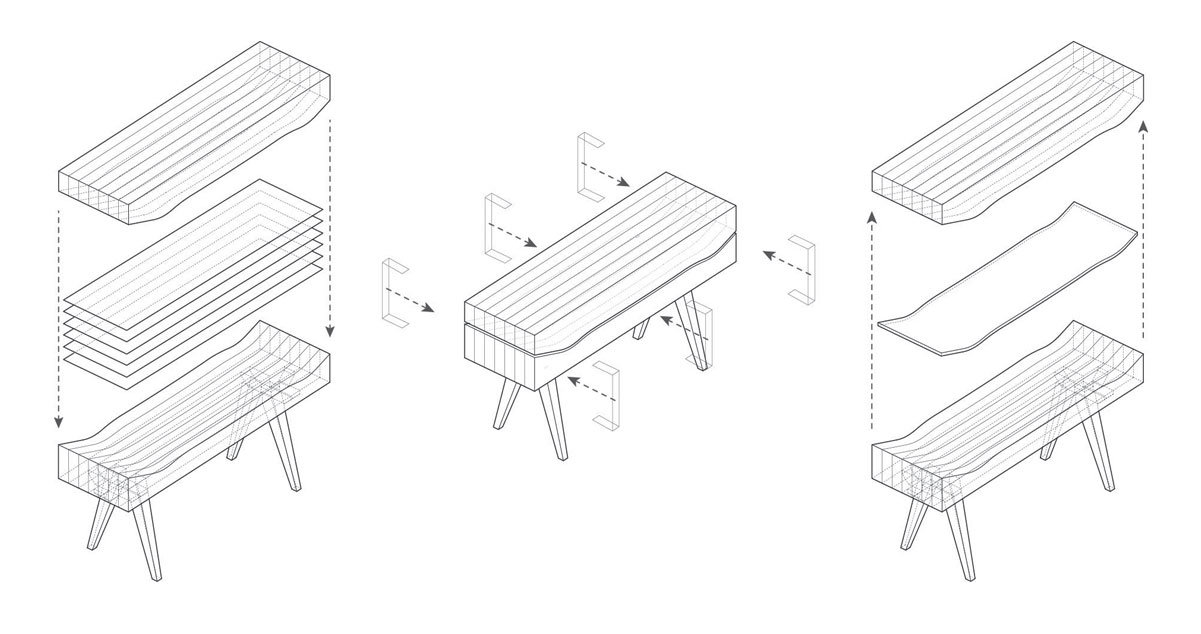YEAR:Summer 2014
SIZE:12″ x 18″ x 36″
MATERIAL:Ash and Douglas Fir
Skateboard bench came about after watching the progress of a furniture studio where students were tasked with designing formed plywood chairs. I noticed the jigs, molds, and presses used to build the chair pieces were often more interesting and crafted with more detail than the finished product. These painstakingly created molds were then placed out of sight to be thrown away later. With these observations in mind, I decided to create a seating element where this relationship is inverted. The mold itself becomes the focal point of the piece and the formed plywood is set aside for other uses.
The skateboard bench was designed and built as two interlocking halves of a mold. These halves were CNC milled from laminated blocks of reclaimed fir and, when fit together, form a bench that sits on top of a collapsible trestle base. The construction of the chair uses elements of detailed digital fabrication and traditional Japanese joinery. The skateboard is formed when seven pieces of thin maple ply are placed between the two halves of the mold and glued together with clamps compressing the wood into shape. Once the plywood is cured and removed from the mold, it is ready to be cut into a skateboard deck, while the mold is ready to be reassembled into a bench.












